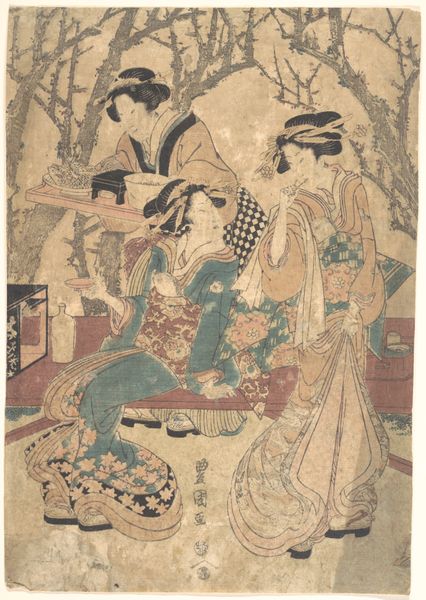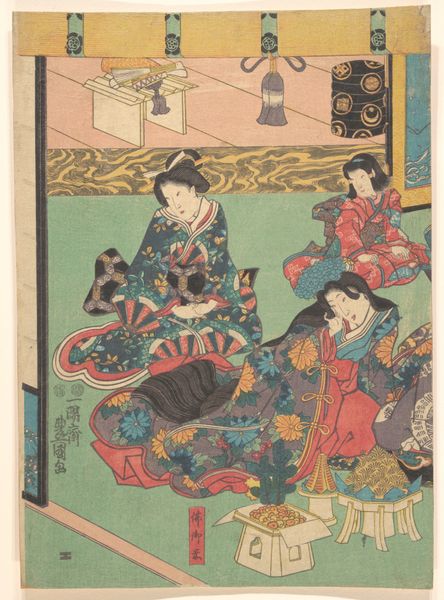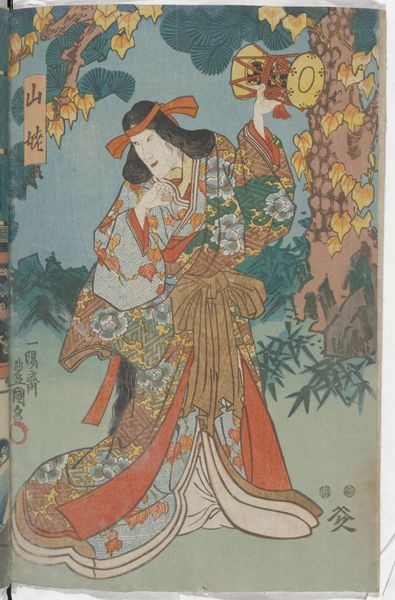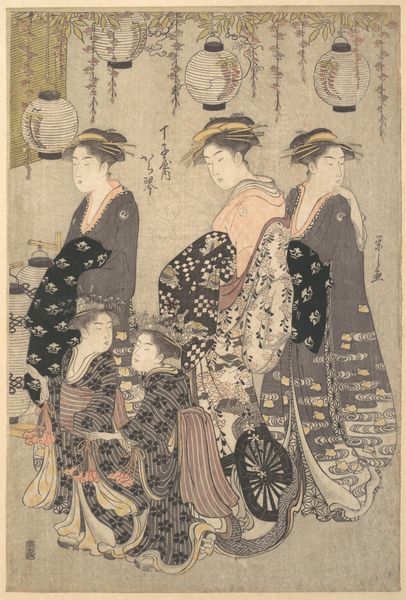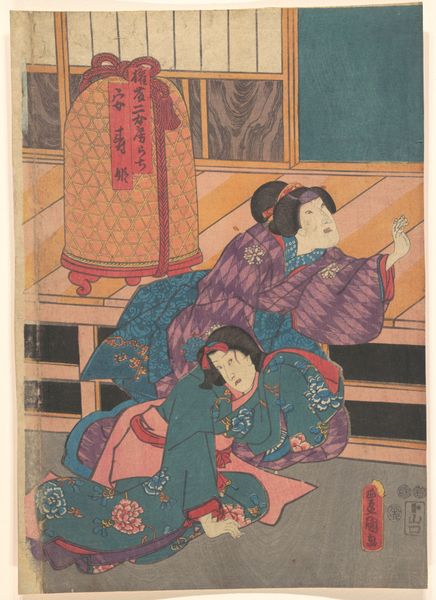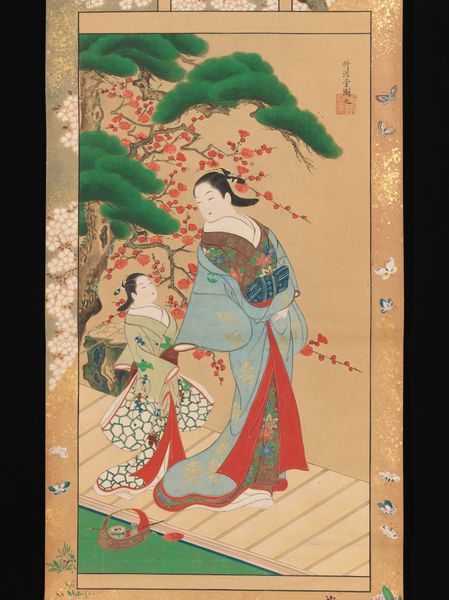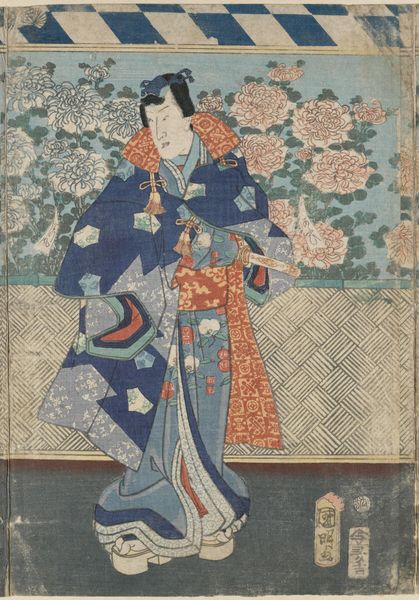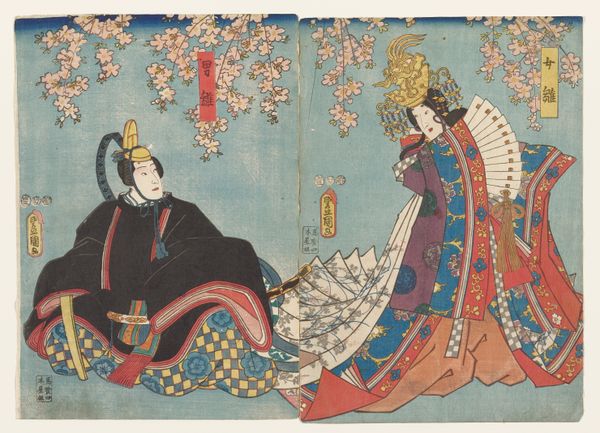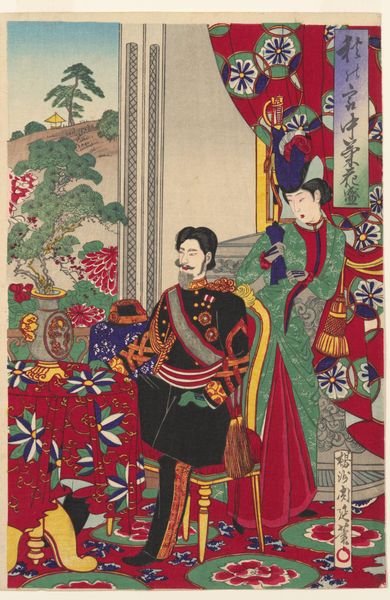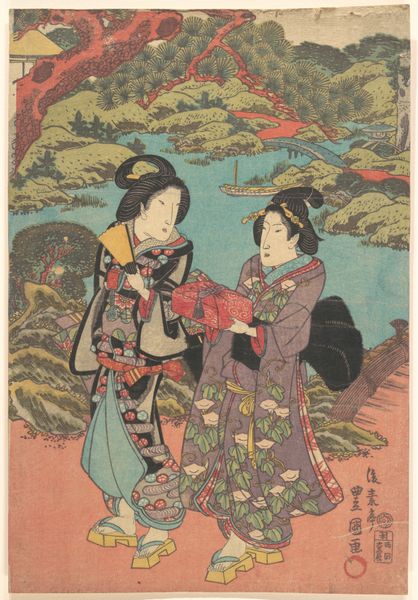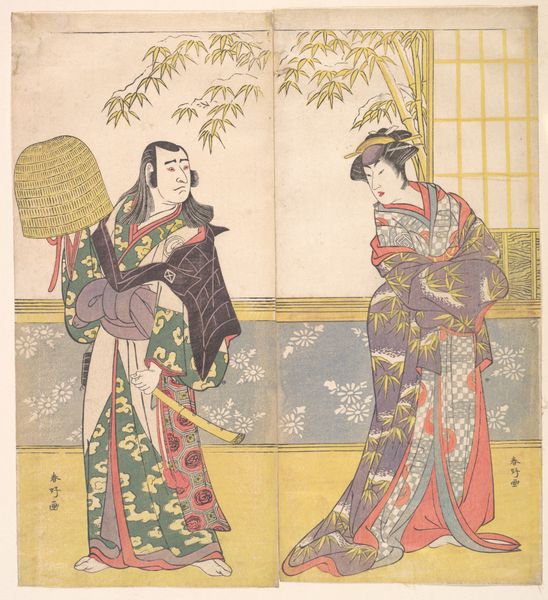
(Woman and Her Attendant from an Unidetified Kabuki Play) 1851
0:00
0:00
print, ink, woodblock-print
#
portrait
# print
#
asian-art
#
ukiyo-e
#
figuration
#
ink
#
woodblock-print
#
genre-painting
Dimensions: 14 3/8 × 10 1/16 in. (36.5 × 25.5 cm) (image, sheet, vertical ōban)
Copyright: Public Domain
This woodblock print by Utagawa Kunisada depicts a woman and her attendant from an unidentified Kabuki play. Japanese Kabuki theatre emerged in the Edo period as a popular, and sometimes controversial, form of entertainment. Woodblock prints like this one were a key part of Kabuki's popular appeal and cultural influence. The print’s bold lines and flat colors, combined with stylized figures, were typical of the Ukiyo-e style that dominated Japanese printmaking for centuries. Ukiyo-e prints provided visual records of famous actors and popular plays. In this way, they served as a kind of publicity material that disseminated images of Kabuki throughout Japanese society. Kabuki’s popularity with the merchant classes was seen as a threat to the established social order. The historian considers the ways in which the print both reflects and contributes to the complex interplay between art, entertainment, and social norms. By consulting theatre records, costume designs, and other historical documents, we might learn more about the play represented in the print and its place in the broader cultural landscape of Edo-period Japan.
Comments
No comments
Be the first to comment and join the conversation on the ultimate creative platform.

